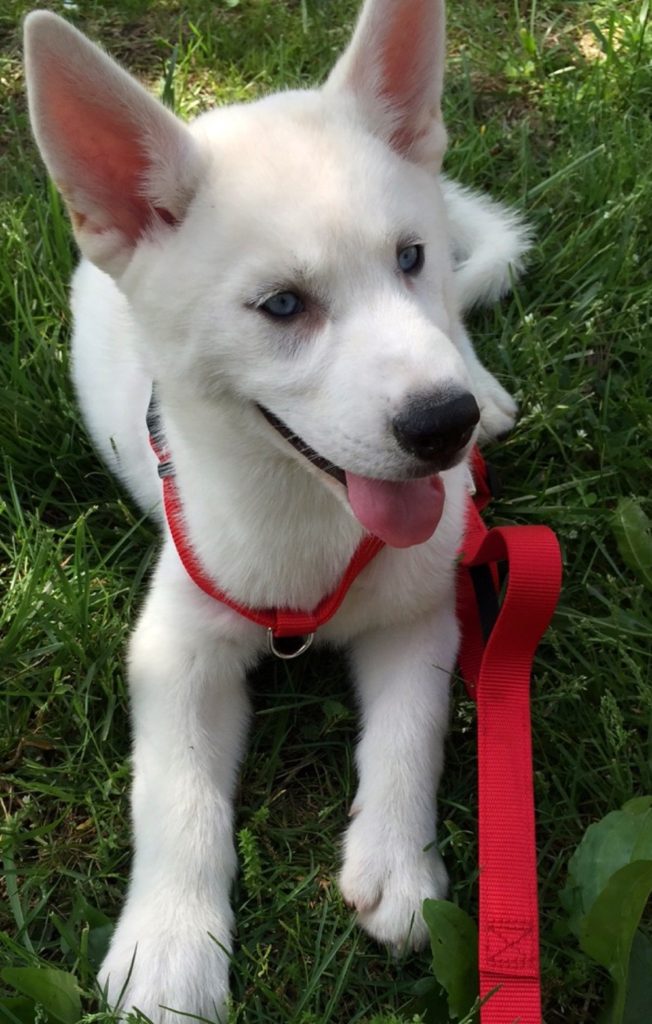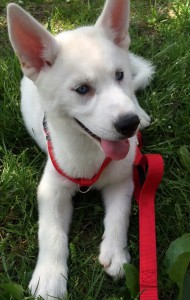Tips For Keeping Puppy Cool This Summer


Summer can be a difficult time to keep your pets cool and hydrated, especially if you have an active dog. With Memorial Day weekend barbeques coming up, and the rest of summer, your dog will most likely be participating in your outdoor activities with you. The simplest way to keep your dog cool and avoid heat stroke is to bring your pet indoors; but for the times when that is not possible follow these tips.
Signs of overheating:
The quickest sign your dog will most likely give you that he’s feeling warm would be panting and rapid breathing as well as excessive thirst. Some other signs might be glazed eyes, bright or dark red tongue, gums, staggering, stumbling, elevated body temperature, weakness, collapse, increased pulse and heartbeat, as well as excessive drooling. In extreme cases dogs may vomit, have seizures, or be unconscious.
Water is your dog’s friend:
The most important thing to do for keeping your pet cool is to always offer fresh, clean water. Hydration is key. Another way to utilize water to cool down is to take them for a swim. This can be in a pond, pool, bath tub, etc. Once they are finished with their swim make sure they are in a cool shady place to dry completely before putting them back in the heat. Be sure to not use ice water to submerge your pet in. A sudden change in temperature for an overheated dog can lead to shock. This is particularly important to keep in mind when caring for a small dog. Accordingly, you can learn more about how to look after a smaller dog by taking a look at this useful guide: https://petvblog.com/smallest-dog-breeds-under-10-pounds/. Similarly, do not pack your dog in ice packs. This leads to the constricting of veins which keeps them from being able to release heat. A better way to cool them down would be to wrap their paws in cloths soaked in cool water, as well as placing them under the armpit area and the back of the head.
Fur isn’t the enemy:
If your dog has a lot of fur your first thought is likely to shave it. This sounds like a safe plan with good intentions, but it can actually be harmful to your pet. An animal’s coat helps provide a barrier for them to regulate their own body temperature. Shaving your dog too close can also increase their chances of getting sunburnt during walks and play time. Instead try brushing your dog to help get rid of loose fur, especially around the beginning of summer as they lose their winter coat. If you’re not sure how to start brushing your dog you can look for advice on kyrapets.com and other dog-loving websites that feature articles on the subject.
Keep outdoor time safe:
When the weather gets warmer you want to be outside more, and so does your dog. The best way to keep your dog safe from the heat during their time outdoors is to change your walk times. Early morning and evening walks are much cooler and safer for both you and your pet than a midday walk. When you are outside playing be sure to monitor your dog for signs of overheating. If you are taking a longer trip remember to bring a container of water just for your dog and a bowl. Be especially careful if you have an anxious dog as this may increase the risk of heatstroke. A Bobby Bed is a great way to reduce anxiety in your dog and help keep them relaxed during the summer. Monitor temperature as well as time spent outside; the hotter it is out, the shorter your time should be.
Frozen treats are fun and helpful:
Your dog will love frozen treats in the heat as much as you do, but as stated before be careful to not offer too many at once and cool your pet off too fast. The simplest frozen treats would be just a regular ice cube, or freezing low sodium chicken broth. They also enjoy tuna, hot dog pieces, and liver frozen. Frozen yogurt helps them cool down as well as aid in digestion. Large carrots from the refrigerator are cool and can help your dog’s eyes and teeth. Almost anything your dog enjoys normally, they will most likely enjoy frozen as well.
All of these tips can help you and your dog have a happy, safe and cool summer, but always remember to contact your vet if you have any concerns or your dog seems to have an extreme case of overheating.






